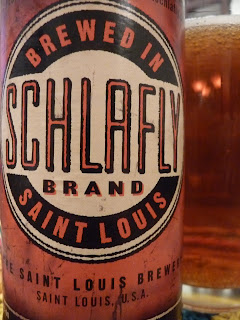Many of the "Chef Bolek Original" recipes are dishes that I create "on the fly." Some of those recipes come with caveats; this one comes with a warning. Do not make it. This recipe originates from the devil inside me ... the one that loves fire and spice. I took two Aji Limo Rojo peppers, which are dried, Peruvian chile peppers and ground them down to a fine powder. I added the powder to some garlic butter and drizzled it over a Vidalia sweet onion. I then wrapped the onion and foil and threw it on the grill for fifteen minutes.
The result is a very spicy blooming onion that is much healthier than the deep fried version that is available at certain restaurants that will not be named. Although I should qualify the word "healthier" in that it will not clog your arteries like the deep fried blooming onion. As for your stomach lining and intestinal comfort, that is a different matter.
The reason rests with the Aji Limo Rojo, a small red pepper that comes from the same family as the habanero pepper. The Aji Limo Rojo is very spicy, with one of the higher ratings on the Scoville scale. Named after its creator, American pharmacist Wilbur Scoville, the Scoville scale measures the piquancy or spicy heat of chiles. Actually, the scale is a measure of the amount of capsaicin in a chile. Capsaicin is a chemical compound that stimulates chemoreceptor nerve endings in skin and mucous membranes.
The scale is measured in units -- Scoville Heat Units (SHU) -- and chiles are usually associated with a range of SHU. For example, a poblano pepper ranges from 500 to 2,500 Scoville Heat Units. A jalapeno pepper ranges from 2,500 to 8,000 Scoville Heat Units. A serrano pepper ranges from 10,000 to 23,000 Scoville Heat Units.
The scale is measured in units -- Scoville Heat Units (SHU) -- and chiles are usually associated with a range of SHU. For example, a poblano pepper ranges from 500 to 2,500 Scoville Heat Units. A jalapeno pepper ranges from 2,500 to 8,000 Scoville Heat Units. A serrano pepper ranges from 10,000 to 23,000 Scoville Heat Units.
As for the Aji Limo Rojo, it ranges from 50,000 to 60,000 Scoville Heat Units. In other words, the Aji Limo Rojo can be as much as one hundred times hotter than a poblano pepper, six to seven times hotter than a jalapeno pepper and up to five times hotter than a serrano pepper. While I love this kind of spicy heat, it may be a little to hot for people who do not like spicy foods. So, do not make it unless you enjoy the "burn" of hot, spicy foods.
THE PERUVIAN FIRE FLOWER
A Chef Bolek Original
Serves 1
Ingredients:
1 medium sized Vidalia onion
2 dried Aji Limo Rojo chiles
2 tablespoons of butter
1 clove of garlic, diced
1/2 tablespoon of fresh cilantro, chopped finely
Salt, to taste
Directions:
1. Prepare the onion. Remove the skin from the onion. Slice a little from the bottom of the onion (the root side) so that the onion will sit flat. Slice a little off of the top. Then slice the onion, top to bottom and left to right. Do not slice all the way through the onion. Leave about 1/2 inch at the bottom. Turn the onion forty-five degrees and repeat, cutting from top to bottom, left to right. Place the onion on an aluminum foil sheet large enough to wrap the onion.
2. Prepare the chiles and butter. Grind the chiles into a fine powder. Melt the butter in a small saucepan. Add the garlic and cilantro. Add the chile powder and remove from the heat. Pour the melted butter over the onion and add salt to taste. Wrap up the onion.
3. Cook the onion. Heat the grill or your stove to about 400 degrees. Grill or cook the onion for about ten to fifteen minutes.
ENJOY!
For more on the Scoville scale, check out Wikipedia.








































